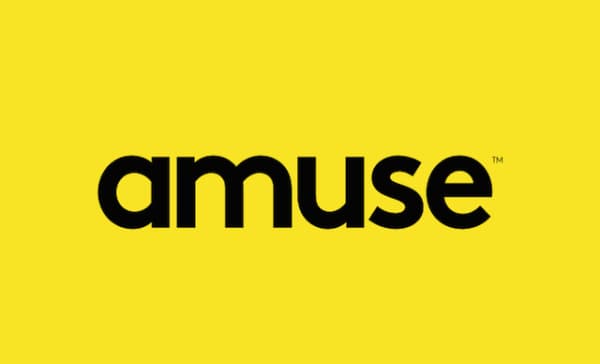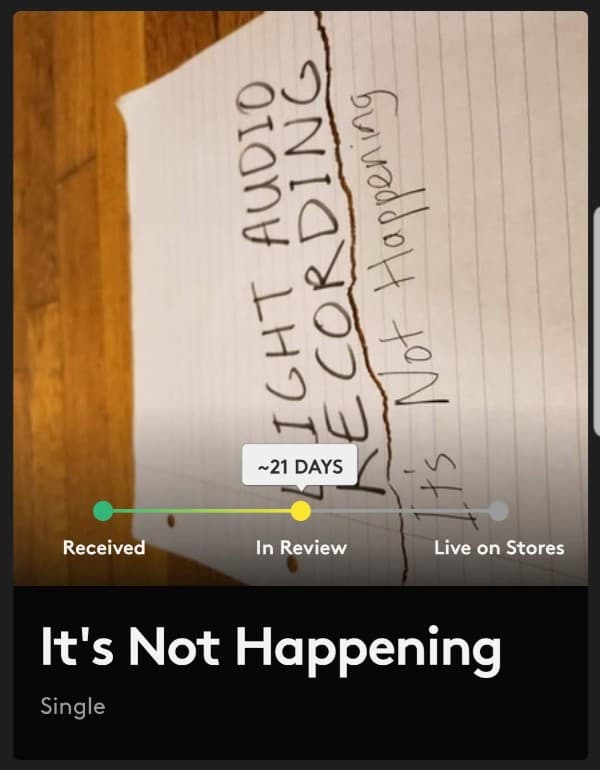So, if you’ve been following Light Audio Recording for a while, you might have noticed the appearance of completed tracks on Spotify. Well, that’s thanks to an app called amuse. And I’m going to tell you about that today.
Background
I’ve recorded and released music under various guises for over a decade.
TuneCore

Firstly, back in 2008, with my band in the UK, a music aggregator called TuneCore was recommended for digital music distribution. At the time, iTunes was king, and Spotify was creeping up.
Now, TuneCore certainly distributed our music. And I gave them money annually per release for them to do so. Eventually, I realized I’d never put in the time and money to make back what I was paying them.
But, I still wanted to release music.
But, at the rate I was going, before I knew it, I’d be giving them $200 per year. It’s not like I was going to have any less releases coming out.
bandcamp

Then, I sacked all that off in favor of bandcamp. No upfront fees, and they take a cut when you reach a certain amount of sales.
Certainly, that’s a much better deal for the artist.
But, the only people on bandcamp are other musicians. Casual music-listening people won’t go out of their way for that, unless you’re Radiohead doing something interesting on it.
Light Audio Recording
With wanting to be a rock star firmly in the past, and knowing that light audio recording would never be super-professional sounding, I didn’t even think about releasing any of the completed music.
There was a few dollars coming in from affiliate marketing – more than I ever made from digital music sales.
But, then my mate Paul aka Unit-01 started releasing singles from his apartment in Paris. And said that light audio recording was a big inspiration in keeping things simple enough to be able to do that.
He asked if I had released any of my light audio recording stuff. So, I decided to at least investigate the matter.
amuse

Certainly, I knew I didn’t want to go back to the likes of TuneCore.
This is light audio recording, and that means keeping the cost light, and that means free, if I could.
amuse appeared on several listicles on the matter. It’s free to distribute your music through them, and you keep 100% of royalties it generates.
Obviously, that sounds too good to be true. I mean, how are these guys making money?
It seems they have a label side to their brand, and that’s where they make money. They give the impression that they essentially use the aggregator side as an A&R tool to find acts to sign.
Their label model is also very different, but that’s a discussion for another day. To be honest, the past 10 to 15 years have had so many stories about how little money there is in the music industry and record labels, I don’t know how they’re pulling that off either.
In any case, achieving a record deal was never an objective of light audio recording. And it still isn’t. At this time, I just want to extend the project a little, from recording to release/distribution.
After some further investigation, I couldn’t find anything actually bad about amuse.
It mostly seemed like whining about the interface, and about it only working on your phone. However, there were a few complaints also about their reporting and not reaching some platforms.
But, I only ever see people share music from Spotify, so as long as it reached there, I didn’t care.
amuse in use
Before you submit a track on amuse, you need two things:
- Your artwork: this needs to be a minimum of 3000 x 3000 pixels
- There are other restrictions, some more obvious than others, but it’s worth reading them pretty carefully
- They do check your submission; and it is rejected if it doesn’t meet requirements
- Your music: this needs to be a single .wav or .flac; the sample rate needs to be 44.1 kHz, it needs to be stereo, and it needs to be 16 bit
- This is such a standard format – it’s the default wav export setting on BandLab anyway
When you submit your first release, you also submit additional information. Stuff like your artist name, contact information, location, etc… all the usual stuff companies want to know about their users/customers.
Subsequently, releases are pretty straightforward.
Uploading
For example, for a regular single release:
- Firstly, you upload your artwork
- Then, there are a few questions about its text, blurriness, and logo
- Next, there are a few questions about the release itself: title, language, and genre
- Secondly, you upload the track itself
- Then, there are some questions about lyrical content, release info, writers, distribution
- Finally, you double-check and submit it
Now, you can upload to amuse from Dropbox, Google Drive, or directly from your device. So, if your cloud storage of choice is OneDrive or Box or something else, you’ll need to get over that.
Personally, I use Google Drive. Firstly, because the wav and image files are relatively large files – larger than I’d want to store on my phone.
Secondly, BandLab doesn’t let you save a wav file to your phone – even if you’re clever and try using the browser version rather than their app.
Thirdly, because I use a Chromebook, preparing the wav and image files, and putting them on Google Drive is quite a seamless process.
Here’s a video showing how to do it, with Dawn and Tim as an example.
Next, the amuse team review your submission. It takes just a few business days.
You receive an email telling you if your release was approved or rejected. If approved, it’ll be live in a few weeks. If rejected, they give you some guidance on why, so you can resubmit it.
Rejection is hard
As I have noted, amuse aren’t afraid to reject songs that don’t meet their requirements – two of mine were rejected.
Alroight Bab was rejected because of the artist name. The name of this entire project, upon which I hang this brand identity… Light Audio Recording!
Apparently, it was too generic. And it suggests that it’s the name of a studio or a production house. Given that everything about Light Audio Recording talks about production, that’s not unreasonable.
But, after a little back and forth with a nice lady called Frida, all was well. And it was approved.
It’s Not Happening was rejected because the artwork was at a wrong angle. I learned that despite how an image looks on my phone, it gets rotated when I upload it to some things… like amuse!

My image editor of choice is Pixlr. I noticed it would oddly rotate some images, and now I knew why. So, after this incident, I always run the artwork through Pixlr to make sure it looks as it should.
amuse: conclusion
At this point, there are three Light Audio Recording songs on Spotify, for free, through amuse.
And that’s great. It all comes back to access to music. While people are told they’re too poor to record music, amuse gives the next level of “F*** you – I’m doing this.” by getting it on Spotify.
It’s an important tool for a contemporary, DIY, punk approach to music.
| It’s free: therefore is the perfect light audio release partner to light audio recording | It’s a bit of a fiddle on an app: but once you’re used to it, it’s OK – I’m sure it wasn’t that much quicker, if at all, when I used website-based services |
| Customer service: despite complaints about it online, I’ve found them prompt and helpful, considering I’m in New York and they’re in Sweden | Time: while other services can get your release online in a couple of days, amuse takes about three weeks – but, that’s a trade off for doing it for free, I guess |
If you found this helpful, subscribe on the right hand side of this page. You’ll be notified of new posts on Thursdays, inspiring you going into the weekend.
And share why you found it helpful. Because it helps us, and others!
Share your own light audio recording thoughts and experiences! There’s a Facebook group, a Subreddit, Twitter and Instagram.
Also, on LinkedIn, you can see the business-brain of Light Audio Recording at work.
Additionally, feel free to shoot me a coffee!
Finally, this is a music project, so we’re on Spotify – the playlist below starts with the most recent release and works backwards. So, feel free to follow us!
